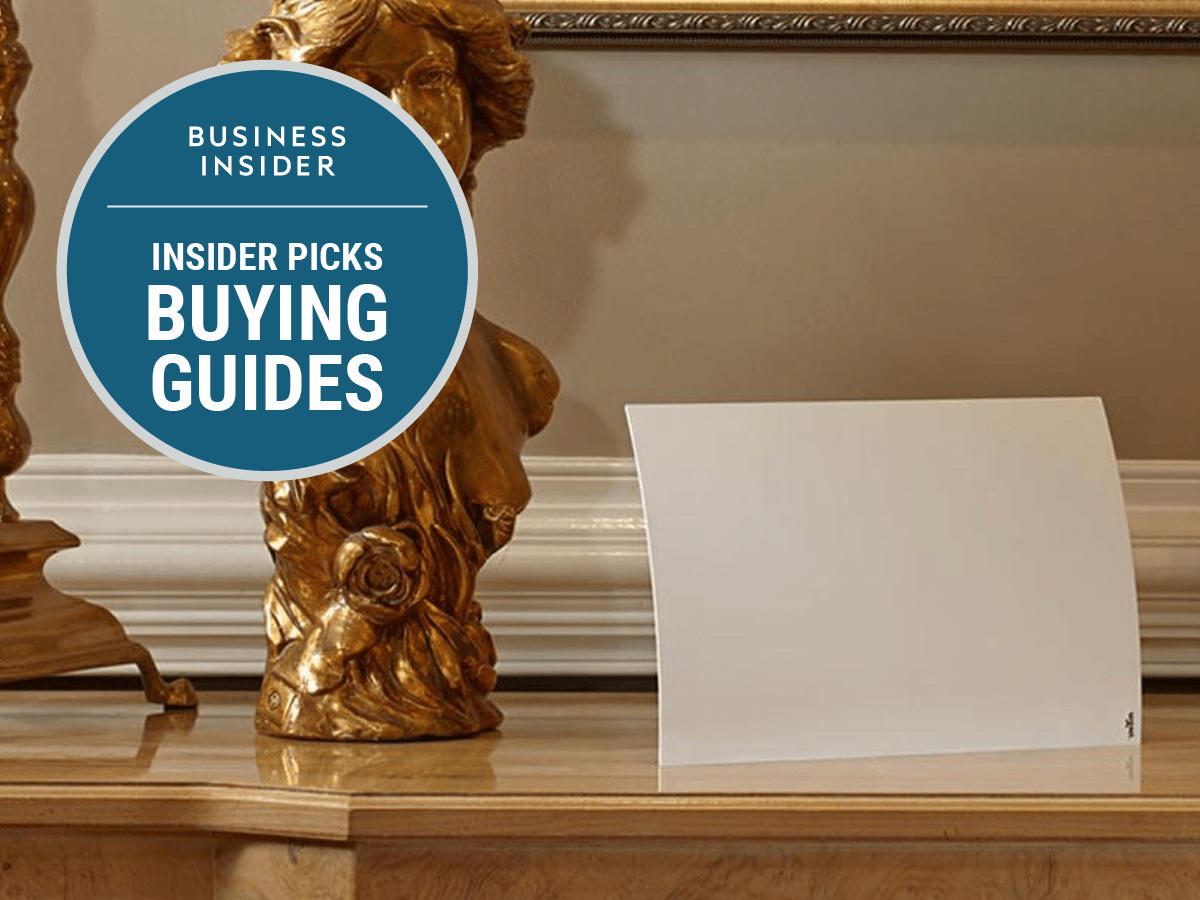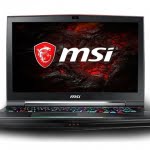The Insider Picks team writes about stuff we think you’ll like. Business Insider has affiliate partnerships, so we get a share of the revenue from your purchase.
 Mohu/Business Insider
Mohu/Business Insider
The Insider Pick:
So you’ve cut the cord, and you love your Roku, but you still want to watch “The Bachelor”, “Masterpiece Theatre”, and the Super Bowl in real time on your big screen TV in crystal clear 1080p. What do you do?
Well, you turn to technology that’s been around for decades and pick up your own antenna.
You’ll have access to major networks like CBS, NBC, ABC, Fox, PBS, and local stations, with comparable, if not superior picture quality to cable, and no regular fees.
The trouble with TV antennas
Which antenna you should buy, however, is a much more complicated question — especially if you’re looking at one of the many indoor, “set-top” antennas that are most common at retailers. Frankly, it’s one that can’t be answered with any succinctness, the way you might say “just buy this tablet” or “here are your best cheap laptop options.”
No one antenna will acquire every broadcast signal with perfect clarity for everyone on its own. At least, no affordable one you’d find in stores will.
Instead, it’s largely dependent on your location — if you have lots of hills or buildings in the way of your nearest towers, those will naturally interfere with the signal. The direction each broadcast tower is pointing plays a role, too, as does the weather, where the antenna is situated in your TV room (higher is always better), how your home is constructed, and a range of smaller factors you probably can’t account for.
How did we pick the best antennas?
The search to find a serviceable indoor antenna is different for everyone because we all live in diverse areas with varying signal strength. To find the best antennas, I tested several on the eastern edge of New Jersey, around 10 miles from the nearest broadcast towers in Manhattan. I set everything up as high as I could in a window facing the most significant cluster of signals. That didn’t mean the antennas were super elevated, but, as best I could tell, my path wasn’t obstructed too much.
Because location plays such a big role in how well these common indoor antennas will work, your experience with them may be different than mine. If you live in an urban, suburban, or well-populated area like I do, you can expect similar results.
Aside from that, I’m presuming you want an antenna that’s easy to install and move around, and that you’d rather tape a lighter antenna to a wall or window than mount a bulkier antenna on a roof or attic. I focused on passive devices, too — stronger, amplified antennas can be helpful picking up more distant signals, but they aren’t always necessary, and they often aren’t the cure-all they’re advertised to be.
I also put some weight into aesthetics. If you’re really close to your towers, an old-school loop and rabbit ears could do the job, but it’ll be a little unsightly. Finally, I’m guessing you don’t want to break the bank, so I stuck to affordable models.
How to pick a good antenna
 Mohu
Mohu
- Signal strength in your area: The number one thing you should do before buying an antenna is check out resources like TVFool and AntennaWeb. Neither are perfect, but they’ll give you accurate representations of what the signal strength situation is like in your area, and they’ll help you see which channels you should expect to pull in reliably with a set-top antenna like the ones here.
- Indoor antennas get fewer channels: Almost by nature, very few indoor-only antennas are capital-g Good. Compared to a heavier duty option that might go on a roof, they’ll attract fewer channels and suffer more broken signals. For instance, AntennaWeb claims 71 channels are available in my region, but even in that not-too-stressful environment, the most I got was 67 with the Mohu Leaf 30. The majority settled in the mid-to-high 50s or low 60s. That didn’t cause much harm with casual use, but it’s not to say you can’t do better. The idea here is to get enough of the channels you care about.
- UHF vs. VHF bands: It’s worth learning which networks near you broadcast in the UHF and VHF bands. The sites above can help you see the divide. Without getting too deep into the physics involved, most indoor antennas do much better with UHF, which is the band type most of the popular networks use. All of the models below were still able to pick VHF networks near me for channels like ABC, PBS, or the CW without much issue, but it’s no coincidence that on the few occasions I did experience breakup, those were usually the channels that had trouble.
- Mileage range may be deceiving: Don’t put much stock an antenna’s advertised mile range — they’re best seen as broad generalizations that are quickly rendered obsolete by the many disruptive elements in between your antenna and the signal tower. TVFool founder Andy Lee says: “There are no standards for how [manufacturers] specify the mileage rating, so usually if they have one, it’s just kind of a shot in the dark. It’s pretty random and doesn’t mean anything.”
Read on to learn about our top picks for the best indoor antennas you can buy. We have a great all-around pick, one that got incredible reception, a budget pick, a pretty antenna, and more. We tested all of these antennas to ensure that they are truly effective, but we also took user and expert reviews into consideration.
Although the Antennas Direct ClearStream Eclipse is our top pick, for various reasons laid out in the slides below, you should also consider the Mohu Leaf, the Mohu Curve, the Winegard Flatwave, and the Mohu Leaf Metro.
The best HDTV antenna overall
Why you’ll love it: In terms of overall convenience, the best of the antennas I tested is the Antennas Direct ClearStream Eclipse.
The Antennas Direct ClearStream Eclipse starts around $40 for a 35-mile version, but my demo unit was the $60 Amplified model, which is currently only available through third-party sellers. The model I tested claims to double the range and includes a separate amplifier. It’s not much of a value, but it mostly makes up for that with steady performance and a tremendously simple setup.
Once everything was hooked up, tuning in with the Eclipse was smooth. All the major networks came in clearly, quickly, and consistently, in both UHF and VHF, with just about all minor channels working the same way. That’s to be expected given my location, but the fact that it lived up to those expectations is appreciable all the same, especially since it’s on the smaller side.
Although it had the highest advertised range of any antenna I tested, the ClearStream Eclipse Amplified (without the amp) pulled in slightly fewer channels than the cheaper, 30-mile Mohu Leaf. Again, this points to the relative uselessness of mileage ratings. While it gives me a little pause about the performance of its entry-level model, the two were very close — based on the returns from every other comparable antenna, it seems to say more about the Mohu’s ability in my area than anything else.
For what it’s worth, the ClearStream family has a 4.5 rating on Amazon after more than 2,000 user reviews, which is unusually high for a device as inherently fickle as an indoor antenna.
What sets the ClearStream Eclipse apart is how painless it is to set up and use. Unlike the hordes of Mohu-aping “mud flap” antennas roaming the market, the Eclipse uses an even slighter loop design — which is better suited to picking up UHF channels — with adhesive right on its back. You can stick it where it’ll work best without the need for extra pins or tape. It peels off easily if you ever need to adjust, and if you wipe it down before reapplying, it’ll be just as secure as it was before. This kind of all-in-one build takes seconds to get ready to go.
Beyond that, its thin coaxial cable is sufficiently long at 12 feet, and it uses a smooth, rounded connector that’s easy to twist into place. However, it is non-detachable. The antenna itself is a breeze to keep behind a curtain, but you can also paint over its front to match the color of your wall if need be. It’s small margins that separate these things, but since it had enough strength, the Eclipse’s straightforward design gave it the edge for me.
Pros: Good reception and range, easy to use, pretty good looking
Cons: It’s more expensive than most of the other options on this list
Buy the Antennas Direct ClearStream Eclipse on Amazon for $39.99
The second-best HDTV antenna
Why you’ll love it: In our tests, the Mohu Leaf 30 had the best reception without sacrificing aesthetics or usability.
The Mohu Leaf 30 is easily the most popular indoor antenna on the market, and while it’s far from perfect, it provides the best signal of all the indoor antennas we tested.
The Leaf 30 was the strongest performer in my testing. It pulled in the most channels, and the major networks all came in at a crisp and smooth 1080p. The lesser networks were perfectly usable, too, with virtually no instances of stuttering. The only hang-ups were two quick instances of FOX taking an extra moment to load.
While some user reviews say otherwise, the Leaf was just about ideal for me and many other buyers. It’s also $20 cheaper than our top pick, the Eclipse.
The Leaf popularized the flat paper look you’ll find on many indoor antennas. For the most part, it’s aged well. Like the Eclipse, it’s omnidirectional, meaning you have less of a chance of needing to angle it toward a specific spot. However, there’s a good chance you’ll still have to, and you’ll likely have a harder time picking up especially distant signals. It’s not ugly, it doesn’t feel as cheap as some of the knockoffs, and it’s certainly not bulky. Its white half gives it a better chance of blending in with your wall, too.
The Leaf is about par for the course in terms of setup, though. If you don’t want to rest it somewhere, you can use tape or put an included set of pins in its little cutouts to keep it stuck against the wall. Moving it around isn’t complicated, but it’s more of a process than the Eclipse. I’m a little iffier on the included coax cable, too. It’s sturdy and detachable, but weightier and slightly shorter than the other options here.
One small detail I did appreciate about the Leaf was its tidy packaging. Everything in the box is laid out clearly, and it includes a simple directions pamphlet and a customer support number if you’re having trouble. You shouldn’t run into too many issues, though.
Pros: Very good reception, great packaging
Cons: Less intuitive to set up, short coaxial cable
Buy the Mohu Leaf on Amazon for $37.99 (originally $39.99)
The best designed HDTV antenna
Why you’ll love it: The Mohu Curve will fit right in with your decor so no one will even know you have an antenna.
If your main concern is how the antenna looks in your home, the Mohu Curve is an appealing option. It’s got a pleasing sense of heft, it’s easy to mount on its included stand, and its slight contours come off as well-crafted. It’s more “minimalist” than “basic.”
That said, the lack of flexibility here means the Curve isn’t as simple to pop in a window as thinner options. Due to its shape, it performed slightly worse than the Leaf or Eclipse. even so, it was largely dependable and most channels worked.
However, it pulled in a handful fewer channels, and at times, I noticed some breakup with major networks like NBC, which use the more favorable UHF band. If there are more objects in between your antenna and the signal tower, it’s worth noting.
Nevertheless, while the idea of a “luxury indoor antenna” is goofy, the Curve could be worth the premium if aesthetics genuinely matter to you and the signal in your area isn’t too shabby.
Pros: A great look, pretty good reception
Cons: Its design makes it hard to move around, current lack of direct-from-Amazon availability
Buy the Mohu Curve from Target for $79.99
Buy the Mohu Curve on Amazon for $34.54 and up from third-party sellers
The best mid-tier HDTV antenna
Why you’ll love it: You can save some money and get a little more flexibility with the Winegard Flatwave.
The Winegard Flatwave wins no points for originality, but as far as the Leaf-inspired alternatives go, it’s respectable. It didn’t pick up as many channels as the Mohu or Eclipse, and it suffered from pixelation a couple more times, but all in all, it was more than solid.
You might want the Flatwave instead of the Leaf for a couple of reasons. First, while it lacks any cutouts for pins, its 15-foot coax cable is thinner and longer, which may make it less annoying to place around the living room. It’s not removable, however. Two, it’s a little cheaper. If you ever see it on sale, and you’re in sync enough with your towers, you should be fine saving some cash.
Pros: Budget-friendly, a longer coaxial cable
Cons: Worse reception than others on the list
Buy the Winegard Flatwave on Amazon for $29.99 (originally $31.96)
The best budget HDTV antenna
Why you’ll love it: The Mohu Leaf Metro is essentially a shrunk down Leaf that loses some reception but costs half the price.
The Mohu Leaf Metro is essentially a smaller, slightly weaker Leaf. It comes with the same coax cable, and it has the same ups and downs in setup, but it looks something like a slick bumper sticker. In person, that’s nicer than it sounds.
The Metro’s reception was less stable than that of the Leaf. In particular, it had some issues holding the VHF-using CW affiliate in my area. It didn’t lose many channels on the whole, though, and the other prominent networks came through cleanly. If you’re neither too far nor too obstructed from your towers, it’s close enough to the regular Leaf to be worth the savings.
Pros: Inexpensive, still aesthetically pleasing, got all the same channels as the regular Mohu Leaf
Cons: Those channels came through less clearly and consistently
Buy the Mohu Leaf Metro on Amazon for $14.99 (originally $16.74)
[“Source-businessinsider”]
 Mohu/Business Insider
Mohu/Business Insider Mohu
Mohu














